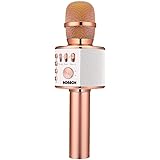
If you’ve clothed a child for any length of time, you’ve no doubt realized that their age doesn’t always correspond to the size of clothes they “should” be wearing (e.g. being three years old but not fitting into size 3T), and there’s a lot of variation among clothing brands. Your child may be a size 7/8 shirt at Target, but size 6 when they’re from Walmart. Their pant size may not even correspond to their shorts size—from the same brand. Add in European sizes, and…do you have a headache yet?
When it comes to kids’ clothes, as annoying as it is, there’s no one-size-fits-all solution (ba-dum-bum, chh). Outfitting your child properly can be a confusing game, especially in the midst of growth spurts and seasonal changes, so here are a few ways to make navigating it a little easier.
Focus on measurements rather than age
While a general size chart can be useful, because there is such fluctuation between brands, the optimal way to zero in on the appropriate size is referring to each brand’s online size chart independently. (Actually the best way is to try everything on, but who’s got time for that—especially when some brands, such as Hanna Andersson and Mini Boden, have very few, if any, retail stores in the country.)
Be sure to use height and weight measurements, rather than age, to determine the best size option for your child. If you see measurements in centimeters, consult an international size chart.
Stick with a few favorite brands
Does it ever feel like you need to hit up half a dozen food stores to get all various items your family wants? This weekend we went to Costco for bulk staples, Safeway for the weekly haul, Trader Joe’s for specialty items, plus the bagel store, and discount booze supplier. When it comes to kid’s clothes though, don’t be like us.
G/O Media may get a commission
While this may not sit well with some, choosing one to three favorite brands and sticking with them for the long haul can add up to fewer sizing issues. While you can order something from every cute catalog that graces your mailbox, unless you want to be on a hamster wheel of constant returns, it’s best to find your favorite, reliable brands early on and keep buying from them so you know exactly what to expect.
One word: Drawstring
Okay, more than one word: Also leggings, joggers, elastic cuffs, and for the love of all that is holy, no skinny jeggings. Basically anything stretchy and loose-fitting with built-in give. If your child is in-between sizes, or if you’re trying a new brand, waistlines sans zippers are the safest bet. Clothes that slip on and off can help mitigate some of the ill-fitting rigidity of buttons, snaps, and clasps.
Drawstring waistbands can not only stretch and be tightened; they can be folded over once to get rid of an extra inch of potential bunching. And even if easy fit joggers with elastic cuffs are too long, they still won’t hang below the ankle. And unless cutting off your toddler’s circulation is on the agenda, skip the skinny fit jeggings—nuff said.
Thrift (or use clothing swap sites)
While it doesn’t solve the sizing issue directly, buying kid’s clothes secondhand, or swapping them, serves to mitigate the pain of dropping hundreds of dollars on new threads every season only for your kid to go through a growth spurt right after you take off the tags.
In addition to Goodwill, consignment shops, yard sales, Craigslist, Facebook marketplace, and—our absolute favorite—hand-me-downs, here are a few other choices: Kidizen lets parents shop gently-used clothes, with an option to set up an online shop to sell their own. Check out ThredUp’s like-new kid’s clothing store and the Swoondle Society, where, for a $15 monthly membership fee, you swap your little one’s used clothes for points to snag the styles and sizes you need.
When in doubt, size up
Whether clothes you purchase are too small, or too large, both are annoying. At least when they’re too big you have the option of storing them to use at a later date (and saving yourself another dang trip to Target or UPS). Our advice is to size up, and be mindful of which fabrics may shrink.
While we’re at it, shopping for kid’s footwear is not much fun either. Check out how to make shoe sizing more manageable here.
Note: This article have been indexed to our site. We do not claim ownership or copyright of any of the content above. To see the article at original source Click Here













